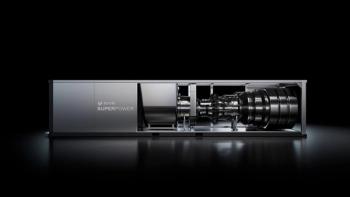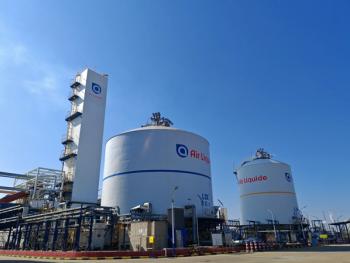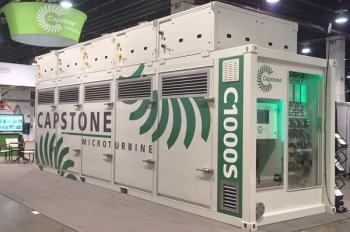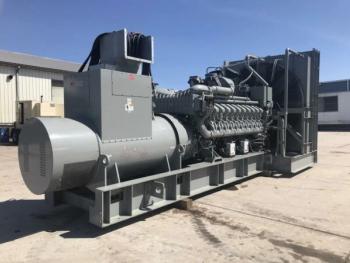GE Vernova commissioned the first of four 250-MW hydropower variable speed units at the Tehri Pumped Storage Hydropower Plant to allow for short response times to load changes, giving the network greater flexibility.
Key Takeaways
- GE Vernova's new variable speed pumped hydro unit at Tehri marks India's first, boosting grid flexibility and renewable integration.
- Tehri will become India's largest hydropower complex (2.4 GW), utilizing advanced pumped storage for critical energy control.
- The project highlights pumped storage as a vital, large-scale energy storage solution, supporting both power generation and water management.
Once completed, the greater Tehri Hydropower Complex will be the largest hydropower plant in India with 2.4 GW of generating capacity. The project’s reservoir will support Uttarakhand’s irrigation and drinking water during non-monsoon periods.
“With this project, Tehri will become India’s first power plant to use variable speed pumped storage technology and the country’s most modern hydropower station,” said Frederic Ribieras, CEO of GE Vernova’s hydropower business. “With fast transition between the turbine and pump operation, the four new units are expected to enable power control, leading to significantly improved grid flexibility. These are all crucial capabilities as more renewables are integrated into the country’s energy mix.”
In India, there is approximately 51 GW of installed hydropower capacity, positioning the nation as the fifth globally in hydroelectric capacity.
For this project, GE Vernova will integrate four doubly-fed induction motor generators and the associated pump turbines with the power electronics and control systems.
Some facts about the Tehri Hydropower Complex:
- 1 GW Tehri Hydropower Plant was commissioned in 2006.
- 400 MW Koteshwar Hydropower Plant was commissioned in 2012.
- 1 GW Tehri Pumped Storage Hydropower Plant, where GE Vernova is currently delivering four 250 MW Pumped Storage Variable Speed Doubly Fed systems under an order signed in 2011 with Tehri Hydro Development Corporation India Ltd.
How Does Pumped Storage Work?
Pumped storage units help stabilize the grid by acting as giant batteries: Water is pumped from the lower to the upper reservoir when there is surplus energy, and, during times of demand, water from the upper reservoir is released, generating electricity as the water passes through the turbine. This technology is the largest source of long-duration energy storage globally, representing about 94% of total energy storage capacity, according to the International Hydropower Association.
A History of Hydropower and Turbomachinery
Hydropower’s continued use as a renewable energy source requires complex hydro turbines and other rotating machines to electrify many regions worldwide.
The Niagara Falls region has been a hotbed for harnessing hydropower since the mid-1700s when power was initially obtained by diverting water from the falls to turn waterwheels at a small sawmill—an early form of the hydro turbine. Since then, advancements in hydro turbine technology and the buildout of hydroelectric plants have transformed the region into an epicenter of continuous, sustainable power.
Today, hydroelectric power plants in the Niagara Falls’ Canadian region generate almost 2 million kW of electricity, while the American plants—Robert Moses Niagara Power Plant and the Lewiston Pump Generating Plant—combine for more than 2.6 million kW. Between these two plants, a combined 25 turbines are being spun. In fact, Niagara Falls is New York State’s biggest electricity producer. According to the U.S. Department of Energy, hydropower accounts for 28.7% of the country’s total renewable electricity generation and approximately 6.2% of total electricity generation.
The Ontario region, via a partnership between Ontario Power Generation (OPG) and GE Vernova, established a 15-year plan to refurbish up to five hydropower plant stations; this includes up to 25 units at the Sir Adam Beck Complex in Niagara Falls—increasing its capacity by up to 50 MW. The hydroelectric refurbishment plans will help secure up to 1,700 MW of clean electricity and extend their life by another 30 years.
Hydropower stations house complex rotating machinery that is exposed to environmental elements, varying elevations, and more, day in and day out. But there is no one-size-fits-all turbomachine used in hydropower plants.
“In a hydropower plant, the rotating machines—turbines and generators—convert the mechanical energy of flowing water through the units into electrical energy delivered to the grid. According to the site characteristics, mainly the differences in elevation between upstream and downstream reservoirs or river levels, different kinds of turbines [can be installed],” explained Jean-Michel Milles, Hydro Power Head of Engineering at GE Vernova’s Hydro Business.






